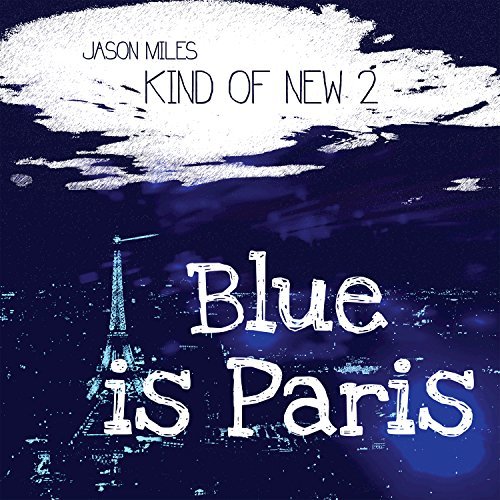Jason Miles - Kind of Blue 2: Blue is Paris
Outtakes, remixes and alternate versions have become so commonplace that a lot of music fans feel kind of cheated if a project doesn’t come with some “extras.” Some of these extras feel downright special: The 40th anniversary copy of Kind of Blue that has the alternate take of “Flamenco Sketches” remains one of my prized possessions in part because of the story about how that is the only tune on that classic album with two takes.
Music fans can learn a lot about the creative process from listening to these alternate versions and outtakes, and it’s just cool to hear the banter between the artists on albums like, say, last year’s Miles Davis Quintet: Freedom Jazz Dance.
Jason Miles - Kind of Blue 2: Blue is Paris
Outtakes, remixes and alternate versions have become so commonplace that a lot of music fans feel kind of cheated if a project doesn’t come with some “extras.” Some of these extras feel downright special: The 40th anniversary copy of Kind of Blue that has the alternate take of “Flamenco Sketches” remains one of my prized possessions in part because of the story about how that is the only tune on that classic album with two takes.
Music fans can learn a lot about the creative process from listening to these alternate versions and outtakes, and it’s just cool to hear the banter between the artists on albums like, say, last year’s Miles Davis Quintet: Freedom Jazz Dance.
Digital technology makes it easier for include alternate takes and multiple remix versions of songs onto CD’s or mp3 files, but often it feels in the creative arts like there’s nothing new under the sun, so it should not be too surprising to learn that artists were including ‘alternate takes’ of songs on records back in the day.
Jason Miles, the keyboard legend who performed with Davis, drew upon his memories of an adventurous project from his childhood and an event of unspeakable evil to create his ambitious new project, Blue Is Paris.
Blue Is Paris is the project title and the title of each of the album’s nine tracks, which are nine different versions of the same song, each recorded by a different artist. The project itself was inspired by an album that Miles’ father bought in the 1950s where 12 artists recorded their own take on the George Shearing tune “Lullaby of Birdland.” Miles got further inspiration from his visit to Paris in the aftermath of the November 2015 terrorist attacks. He traveled to France to promote his Kind of New project, and recalled being moved by the city’s resilience and determination not to be cowed.
Miles planned on writing a Kind of New, Part 2 and managed to write one song, “Blue Is Paris,” and then went in a different direction. That direction - recording an album in which each of the song is an alternate version made by a different artist, is fraught with risk as is often the case with a labor of love.
Will listeners be there for an album of nine tracks of the same song, no matter how good and unique those takes are? We’re about to find out because each track on Blue Is Paris has its own unique personality. That should not be surprising since Miles’ collaborators include trumpeters Theo Crocker, Russell Gunn, Patches Stewart; saxophonist Jeff Coffin and guitarist Ricardo Silveria also come from the jazz world - a genre that places a premium on creativity and think on one’s feet improvisational skills.
If I had one wish, it would have been the album included a couple of more vocal versions of the tune, since indie-soul legend Maya Azucena delivered hands down best performance on a solid project. Her searing rendition takes the form of a conversation between a person who waited in vain for the phone call or the “marked safe” notification of Facebook that never came, and the friend who died in the attack.
Croker’s version has a funk and jazz fusion feel that has the feel of some of the tunes on Davis’s Tutu album, a project in where one of the musicians was Jason Miles. Miles’ work on the keyboards alone gives Jukka Eskola’s version a breezy feeling, as the trumpeter switches between that instrument and the flugelhorn.
Miles opts to give his contribution a percussive sound through the use of his keyboard programming. That could be viewed as a way of recognizing that presence and contributions of France’s large North African population, while jazz guitar endows Ricardo Silveria’s take on the song with a Wes Montgomery jazz/soul feel.
There is a good possibility that plenty of folks will put off by what they view as the redundancy of hearing the same song nine times. But others will see Blue Is Paris as something more than nine versions of the same song, they will cherish nine unique artistic takes on one historical event. Both views are correct, and I suspect the album will prompt the type of debates over the artistic merits of this project that are usually reserved for museum galleries. The listeners who ‘get’ Miles’ statement will be those who appreciate Blue Is Paris’ same-yet-different feel because it provides a dual payoff of putting a favorite tune on repeat and really hearing something distinct each time. Recommended.
By Howard Dukes

